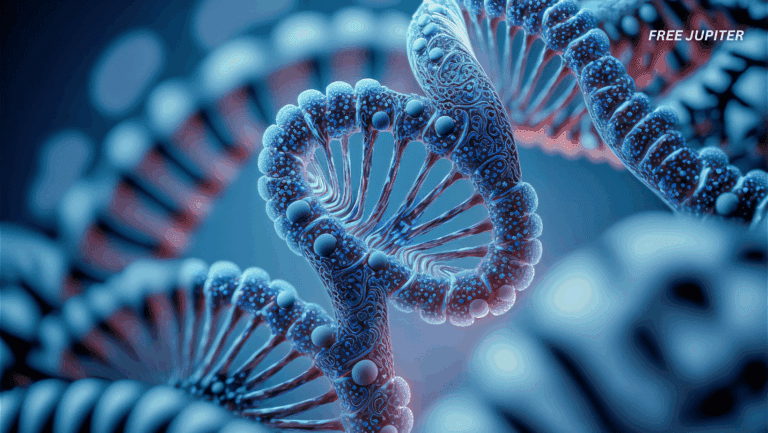It sounds like something pulled straight from a science-meets-mythology thriller—a lethal fungus, once feared for allegedly cursing ancient tomb raiders, is now offering hope in the form of a potential cancer treatment.
From Tombs to Treatments: A Surprising Transformation
Scientists at the University of Pennsylvania have taken on the curious challenge of taming Aspergillus flavus, a toxic fungus with a grim reputation. Historically blamed for the mysterious illnesses and deaths of archaeologists exploring Egyptian tombs, it earned the nickname “Pharaoh’s Curse.” But modern science is giving this ancient menace a radical makeover.
Instead of spreading disease, the re-engineered version of this fungus might soon be saving lives.
Meet Aspergimycins: Lab-Made Cancer Fighters
By reworking the chemicals naturally produced by Aspergillus flavus, researchers created a group of compounds called aspergimycins. These lab-designed molecules showed a remarkable ability to zero in on leukemia cells—cells that cause a serious form of blood cancer—while leaving healthy cells untouched.
That specificity is crucial. Traditional cancer treatments, like chemotherapy, often kill both cancerous and healthy cells, causing widespread side effects. But aspergimycins seem to work with far more precision, making them a hopeful addition to the cancer-fighting toolkit.
Fungi: The Underexplored Frontier of Medicine
While the medical world has long relied on bacteria to discover powerful antibiotics (think penicillin), fungi have been far more elusive. Their biochemical blueprints are complex, and until recently, difficult to study and manipulate. But this breakthrough research is beginning to shift that narrative.
Fungi produce a vast array of natural compounds, many of which remain uncharted. The discovery of aspergimycins signals a new chapter in drug development, one where fungi take center stage as unexpected but potent sources of medical innovation.
Read more: Doctors Say You Need to Know A Few Things Before Starting a GLP-1
How It Works: Blocking Cancer at the Source
One of the most exciting aspects of this research lies in how aspergimycins interact with cancer cells. The compounds infiltrate the leukemia cells and disrupt their ability to divide. Since cancer thrives by multiplying rapidly, stopping this process is a major step in halting disease progression.
By identifying how these molecules interfere with cell division, scientists are also gaining a deeper understanding of how cancer works on a cellular level—insights that could influence future therapies far beyond leukemia.
Still in the Lab: Why Caution Is Key
As promising as these early findings are, it’s important to remember that they are still in the experimental phase. The research has been conducted in controlled laboratory environments, and many hurdles must be cleared before aspergimycins can become a standard part of cancer treatment.
Clinical trials, regulatory approval, long-term safety assessments—all of these lie ahead. But the early results suggest a powerful new direction for cancer research, one inspired by nature’s own toolkit.
From Folklore to Pharmacology: Nature’s Untapped Power
This discovery is a powerful reminder that nature, in all its mystery and danger, often hides solutions in plain sight. Something once feared for causing death and illness may now help prevent them. It’s a poetic twist that highlights the value of curiosity, creativity, and exploration in science.
And this may just be the beginning. If one fungus can yield such promising results, imagine what other organisms might be waiting to be discovered—organisms growing quietly in the soil, on decaying logs, or in the depths of ancient tombs.
The Takeaway: Hope from the Most Unlikely Places
In the end, the story of the “Pharaoh’s Curse” fungus is more than just scientific novelty. It’s a symbol of how modern medicine continues to evolve—by diving into the unknown, rethinking the dangerous, and transforming the feared into something healing.
With further research, aspergimycins could someday be part of a new generation of cancer treatments—precise, potent, and born from one of the most unlikely sources imaginable.
Read more: Broccoli Isn’t Actually Natural—It Was Engineered by Humans Over Many Centuries
Related story: The Accidental Discovery of Penicillin That Changed the World
Sometimes the greatest scientific discoveries don’t begin with thunderous eureka moments or laser-focused experiments. Sometimes, they begin with… clutter. That’s exactly how penicillin—arguably one of the most important medical breakthroughs in human history—was discovered: through a combination of curiosity, chaos, and mold.
A Messy Lab, A Lucky Break
The story begins in 1928 with a Scottish bacteriologist named Alexander Fleming, who was known less for his organizational skills and more for his scientific curiosity. While working at St. Mary’s Hospital in London, Fleming was studying Staphylococcus bacteria—common germs that can cause everything from minor skin infections to serious diseases.
One day, before heading off for a short vacation, he left a stack of petri dishes filled with bacteria cultures on his lab bench. When he returned, something strange caught his eye: one of the dishes had grown a fuzzy blue-green mold, and even more surprisingly, the bacteria surrounding the mold had vanished.
Most scientists might have tossed out the dish and started fresh. Fleming, however, was intrigued.
From Fungus to Wonder Drug
Fleming observed that the mold seemed to be releasing some kind of substance that was lethal to bacteria. He identified the mold as Penicillium notatum, a relatively common type of fungus, and the bacteria-killing substance it produced became known as penicillin.
This mold wasn’t just stifling bacterial growth—it was obliterating it. Fleming had stumbled upon the world’s first natural antibiotic, a drug capable of fighting bacterial infections without harming human cells.
But the path from discovery to widespread use wasn’t smooth or immediate.
The Long Road to Mass Production
While Fleming published his findings in 1929, his lab lacked the resources and industrial tools to isolate and mass-produce penicillin in a usable form. It wasn’t until the early 1940s, more than a decade later, that a team of scientists at Oxford University—including Howard Florey and Ernst Boris Chain—picked up where Fleming left off.
They figured out how to purify penicillin and scale up production, just in time for World War II, when bacterial infections from wounds were killing more soldiers than bullets. By the time the war ended, penicillin was being called the “wonder drug” and had already saved countless lives.
Why Penicillin Was Such a Game Changer
Before penicillin, even minor infections could spiral into deadly conditions. People died from infected scrapes, childbirth complications, and post-surgical infections. There were no reliable ways to stop bacteria from spreading inside the body.
Penicillin changed all of that. It was the first effective treatment for diseases like pneumonia, syphilis, strep throat, and gonorrhea. And unlike many chemical disinfectants of the time, penicillin didn’t harm human tissue. It targeted only bacteria—specifically by interfering with the bacteria’s ability to build strong cell walls.
Its success paved the way for a whole new class of drugs: antibiotics. These life-saving medications have since transformed medicine, making procedures like organ transplants, chemotherapy, and even routine surgeries significantly safer.
A Moldy Legacy That Still Matters
What makes the discovery of penicillin especially remarkable is how accidental it was. Fleming himself once noted, with a touch of humor, that he didn’t plan to revolutionize medicine—it just kind of happened. “When I woke up just after dawn on September 28, 1928,” he said, “I certainly didn’t plan to revolutionize all medicine by discovering the world’s first antibiotic. But I suppose that was exactly what I did.”
Despite its humble beginnings, penicillin is credited with saving over 200 million lives and continues to serve as a foundation for modern antimicrobial treatment. Today, many antibiotics have been developed from natural sources, but penicillin remains a symbol of nature’s unexpected power and science’s ability to recognize it.
Read more: Scientists Just Found Out Parkinson’s May Start Somewhere Outside Of The Brain
The Takeaway: Never Underestimate a Bit of Mold
Fleming’s messy desk might’ve looked like poor lab management, but it turned out to be the breeding ground for one of humanity’s greatest medical triumphs. The mold that grew in that forgotten dish didn’t just change the course of medicine—it reshaped the entire relationship between humans and infectious disease.
It’s a quirky, beautiful reminder that science doesn’t always happen under a microscope or within a grand experiment. Sometimes, it happens because someone noticed a little fungus doing something weird—and decided it was worth investigating.










